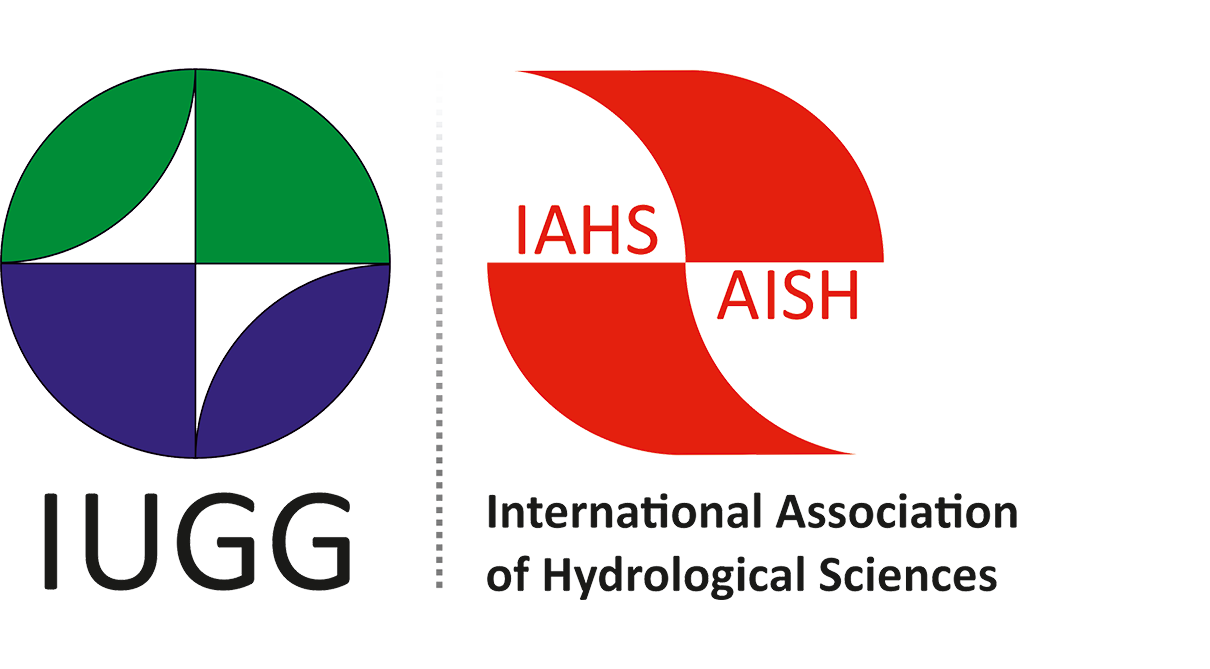Tison Award 2001
The Tison Award for the year 2001 is bestowed upon Dr Linda See from the School of Geography, University of Leeds, UK, for two papers recently published in Hydrological Sciences Journal, of which she is the first co-author:
-
Linda See & Stan Openshaw (1999) Applying soft computing approaches to river level forecasting, Hydrological Sciences Journal, 44(5): 763-778.
-
Linda See & Stan Openshaw (2000) A hybrid multi-model approach to river level forecasting, Hydrological Sciences Journal, 45(4): 523-536.

Pierre Hubert enjoying presenting the Tison Award to Linda See
Wallingford, 17 September 2001
The papers deal with applications of artificial intelligence (AI) in hydrological sciences, and flood forecasting in particular. The important area of river flow and stage forecasting is rather classical, but the approaches taken by Dr See are indeed novel and innovative. She made use of such modelling techniques as: artificial neural networks, fuzzy logic, and genetic algorithms. These methods, originally developed in systems sciences by Zadeh, Kohonen, Holland, Goldberg, Kosko and others, have been imported into hydrological sciences as they hold potential for applicability. They are not derived from well established equations of mathematical physics, which rigorously describe hydrological processes in a micro-scale. However, they offer an atractive practical alternative, especially in cases where it is difficult to use physically-based models.
After having dealt with individual models, intercomparison of models and selecting the best approach for particular conditions, Dr See tried to integrate models into a hybridized construct combining conventional modelling methods with AI-based approaches to provide a better overall solution than could otherwise be achieved with the use of a single technology. She suggested several methods of integration and used different evaluation measures.
Even if some systems approaches to hydrology have been criticized as „curve-fitting exercises", which neither improve our insight nor understanding, in the opinion of present writers, the methodology in question does not belong to this category.
Both papers in question were well received by anonymous reviewers who evaluated these submissions to Hydrological Sciences Journal. Papers by Dr Lee and Dr Openshaw can be seen as being embedded in a set of several contributions, published recently in HSJ, on hydrological applications of neural networks, genetic algorithms and fuzzy sets. This fact documents growing interest of the hydrological community in these novel approaches. It is hoped that these methods may lead to enhancements to conventional models. As mentioned by Dr See, extensive testing is still required, on a wider range of station types and catchments, to see how they behave for many real-world events. Yet, the methodology has already gained attention of operational hydrology - neutral network flood forecasting software is being operationally used by the Environment Agency in the U. K.
Despite young age, Dr See has gathered a considerable international experience, having already worked in four countries: Canada, Germany, intergovernmental Food and Agriculture Organization in Italy, and recently - U.K.
Beside co-authoring the papers mentioned in this citation, Dr See has played an important role of reliable reviewer of several papers submitted to Hydrological Sciences Journal.
Congratulating Dr See, I wish to express the hope that she will continue to submit excellent papers to Hydrological Sciences Journal and to assist us in reviewing papers of others, and maybe she will also get involved in other IAHS activities.
Zbyszek Kundzewicz
